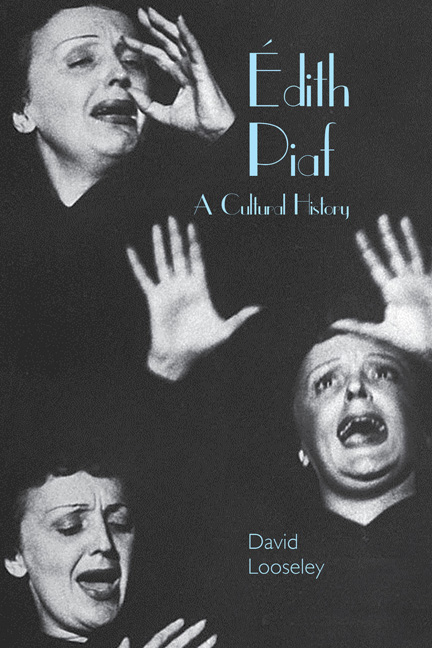9 - Performing Piaf
from Part III - Afterlives
Summary
If we search back over the 50 years of commemoration, one thing that stands out is that Piaf's posthumous meanings and uses derive more from her life than from her work, although the two still can't be properly separated. One obvious meaning she carries is the damaged star. Hence her ongoing association with Garland and Holiday. As the number of TV documentaries on the three, separately or together, suggests, the celebrity culture of the twenty-first century seems hungry for such icons, perhaps because it has difficulty throwing up damaged stars of its own that the public cares about for very long, and because celebrity is different from stardom. The reality show has played its part here. The logic of the reality format is to deconstruct fame, allowing us to see a flimsy mask of celebrity being manufactured then worn. We know the flaws before we register the fame, so there's none of the dramatic disclosure that there was with historically validated stars like Piaf or Holiday, who have gained our admiration, pity and fear because the tragic flaws underpinning their art were gradually exposed after the advent of fame. Piaf's self-invention offers a particularly elaborate version of this. Damaged since childhood, she was bent on constructing a public self that she controlled and could disappear beneath. But she also allowed the world to discover as much of the damage as she wanted us to know, while concealing its truly intimate nature. This strategy of self-protection through self-projection is close in some ways to the social psychology of Facebook, Twitter and the selfie: the desire for the inner life to be hidden beneath a remote-controlled outer one. The Facebook self, like the public Piaf, isn't a complete invention, removed from the private one: rather, the private self is embellished, made more socially acceptable, and perhaps more liveable too.
This points to another posthumous meaning, which is her claimed relevance for modern times. Much of the anniversary discourse over the years has involved passionate assertions about her undying appeal, even for the young. It has regularly been claimed that the majority (75% to 80%) of the Association of Friends’ members are under 40, even today according to Marchois.
- Type
- Chapter
- Information
- Édith PiafA Cultural History, pp. 171 - 184Publisher: Liverpool University PressPrint publication year: 2015



